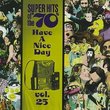| All Artists: Roger Woodward;Piano;Alexander String Quartet Title: Fryderyk Chopin: Piano Concerto No. 2 F-minor Op. 21 (Original Version for Piano and String Quartet) / L. v. Beethoven: Piano Quartet No. 3 C-major WoO 36 Members Wishing: 0 Total Copies: 0 Label: Celestial Harmonies Release Date: 8/31/2009 Album Type: Import Genre: Classical Style: Chamber Music Number of Discs: 1 SwapaCD Credits: 1 UPC: 013711327724 |
Search - Roger Woodward;Piano;Alexander String Quartet :: Fryderyk Chopin: Piano Concerto No. 2 F-minor Op. 21 (Original Version for Piano and String Quartet) / L. v. Beethoven: Piano Quartet No. 3 C-major WoO 36
 | Roger Woodward;Piano;Alexander String Quartet Fryderyk Chopin: Piano Concerto No. 2 F-minor Op. 21 (Original Version for Piano and String Quartet) / L. v. Beethoven: Piano Quartet No. 3 C-major WoO 36 Genre: Classical
Poles apart, Fryderyk Chopin's F-minor Concerto Op. 21 from 1829, its miraculous version for piano and string quartet from 1832, and Ludwig van Beethoven's already mature C-major Piano Quartet WoO 36 from 1785, leave perfo... more » |
Larger Image |
CD Details
Synopsis
Album Description
Poles apart, Fryderyk Chopin's F-minor Concerto Op. 21 from 1829, its miraculous version for piano and string quartet from 1832, and Ludwig van Beethoven's already mature C-major Piano Quartet WoO 36 from 1785, leave performers intrigued to reassess Chopin's early Warsaw period (1826-1831) and Beethoven's Bonn period (1781-1792). Propelled by the revolutionary forces of their time, crucial points of departure in the lives of the fifteen year-old Beethoven and nineteen-year-old Chopin produced visionary, brillante-style works 44 years apart, much earlier in their creative lives than could ever have been expected. Both broke new ground as one rejected the ancien régime for the Enlightenment to greet the other in the early morning of Romanticism.If Chopin's memorable achievement from his early period was the posthumously published E-minor Nocturne Op.72 no.1, composed in 1827 (or as Jan Ekier proposes, more likely in 1829), another work in A-flat which closely resembled a Nocturne (at least in all but name) rivals the E-minor Nocturne's position as the alleged ne plus ultra of the period. Completed in September 1829, the same Nocturne-like work in A-flat, was enshrined by Chopin as the Larghetto for the central movement of an F-minor Concerto. Based on a mazurka, work on a Finale for the same Concerto commenced in late 1829 before a tempestuous, opening Maestoso was added in early 1830. However, during his travels throughout Europe in the first part of 1830-31, Chopin lost the orchestral parts to his F-minor Concerto. In the meantime, he composed an E-minor Concerto before he was able to complete the full score of the F-minor and the E-minor was published as his First Concerto Op. 11 in 1833. The F-minor Concerto was subsequently published in 1836, by Breitkopf & Härtel, Leipzig, entitled: Second Concerto pour le piano. Avec accompagnement de l'Orchestre ou avec Quintuor. Despite the fact that not all information has yet come to light surrounding the orchestration of the F-minor Concerto, it remained clear, two years after its first performance, that it was Chopin's intention that the work should exist in a second version for piano and string quartet with double bass. It is possible that it was in this enlarged string form that the first private performance was accompanied by a small chamber orchestra directed by Karol Kurpinski in the drawing room of the family house when Chopin first performed his F-minor Concerto to a select audience on March 3rd, 1830. The first public performance quickly followed for a large audience of 900 at the National Theatre, Warsaw, on March 17th, with a repeat performance five days later. Although Chopin never played the work again publicly, the F-minor Concerto remained, according to his pupil Mikuli, "particularly dear to Chopin's heart". Moreover, according to Liszt, Chopin retained "a marked predilection [for the Larghetto] which he liked to play frequently" in a two-piano version with his students. His E-minor Concerto Op.11 was also published as a piano quintet as well as a solo work.
Similar CDs
| Two Door Cinema Club Tourist History Genres: Pop, Rock Label: Glass Note | |
| Various Artists Have a Nice Day 25 Genres: Special Interest, Pop, Rock, Classic Rock, Metal Label: Rhino / Wea | |

 Track Listings (6) - Disc #1
Track Listings (6) - Disc #1


